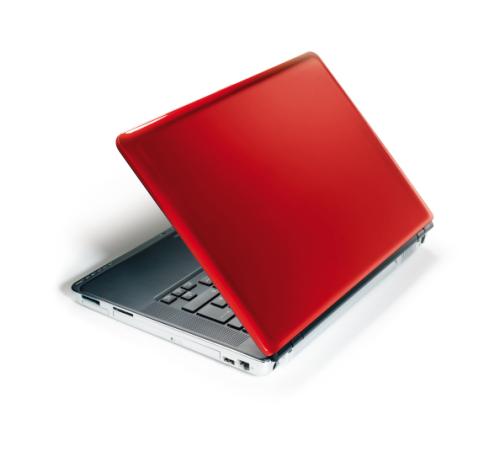

Press releases can be one of the most effective ways for small businesses to generate media coverage, build brand awareness, and deliver important company updates. Well-written and distributed press releases can help your business gain valuable exposure and reach new customers.
This guide covers popular approaches to crafting and distributing press releases for small businesses.
The purpose of a press release
Press releases can serve various purposes depending on your business situation and goals. Many small businesses use press releases to garner media attention and enhance brand visibility.
You might be announcing a new product or service, promoting an upcoming event or new partnership, or responding to industry trends and relevant news. Press releases can also help establish your business as a thought leader in the industry and attract potential investors. Effective press releases can also enhance your online visibility when published online with search engine optimisation, which is one of the reasons they remain so relevant to small businesses. (external link)
Components of a press release
The most common press release format typically includes:
- Headline – captures attention and summarises the news in a few words
- Dateline – date and location
- Lead paragraph – contains the most important information (who the company is, what the product/service/event/partnership is, when and where it is launching, and why it is interesting)
- Body – expands with supporting details, quotes from company figures, and background information
- Images – adds visual intrigue
- Boilerplate – about the company, its history and mission
- Contact information – name, position, phone number, email, and website
- Logo/letterhead – company branding elements.
When to write a press release
Many small businesses issue a press release to announce significant company developments. Not every business activity warrants a press release, but important changes and milestones often do.
For example, you might write a press release before:
- Launching new products or services
- Expanding into new markets or locations
- Announcing a merger or acquisition
- Receiving industry recognition and awards
- Hosting or sponsoring events.
Issue your press release when the news is fresh and relevant. If what you’re announcing isn’t new or doesn’t represent a meaningful change for your business, it might not be newsworthy.
The media landscape moves quickly, so delaying major announcements means you risk becoming yesterday’s news.
How to write a press release
To capture media interest, press releases need to be engaging and newsworthy.
Successful press releases often follow a standard format, featuring clear, concise language and minimal jargon. Current announcements are typically written in the third person, present tense.
- The headline grabs attention while accurately representing the content. Keep it under 10 words if possible. Make it specific and active. For example, ‘Local Tech Company Launches AI-Powered Customer Service Platform’ is more effective than ‘Company Announces New Service’.
- The lead paragraph contains the most important information (who the company is, what the product/service/event/partnership is, when and where it is launching, and why it is interesting). Journalists are inundated by press releases, so if they only read this paragraph, they should understand your story.
- Body paragraphs add context and details. The second paragraph typically expands on the announcement with specifics, such as facts, features, and benefits. The third paragraph might include a quote from a company executive that adds perspective. Additional paragraphs might cover industry context or technical details.
- Quotes humanise your story. Include one or two insightful quotes from relevant employees. A CEO quote might focus on vision and market impact, while a product manager could highlight specific benefits or features.
- Images of your product, event, or team can add visual intrigue and support your story.
- Data and statistics add credibility and newsworthiness. Include specific numbers like ‘increased efficiency by 35%’ or ‘serves over 10,000 customers monthly’ to give journalists concrete details to use.
- The company boilerplate appears at the end. It should remain consistent across all your press releases, describing your company, its services, and its location.
Where to distribute your press release
A good press release is wasted if it doesn’t reach the right audience.
When developing a distribution strategy, many businesses begin by identifying the media outlets and journalists who cover their industry or area. Consumer and media software services provider Cision has found that 72% of journalists (external link) want to receive press releases from PR representatives, so getting your statement in the hands of the right ones can make a big difference.
If you run an accountancy firm, you might choose industry publications or local business journalists. A café might target food writers at local newspapers and lifestyle bloggers. Researching which reporters cover your area and sending personalised pitches can help get your press release in the right hands.
Local media outlets can provide the best coverage for small businesses as they’re more likely to cover community business news than national outlets. Contact your city newspaper, regional magazines, and local TV stations.
Industry-specific publications can help you reach your target audience directly. Trade magazines, newsletters, and online platforms often feature relevant business announcements.
Press release distribution services like PR Newswire or Business Wire can broaden your reach, although they may be costly for small businesses. On the other hand, free services like PRLog or OpenPR can provide basic distribution.
Your company website should promote the press release. Create a dedicated ‘News’ or ‘Press’ section where journalists and customers can find your announcements.
Social media channels can help you reach new audiences. Share the press release across various platforms where your target audience is active, whether that be LinkedIn or TikTok.
Common press release mistakes to avoid
Many businesses undermine their press releases through avoidable errors that affect brand credibility and newsworthiness.
Writing mistakes:
- Headlines that are too vague or generic (‘Company Announces Exciting New Product’)
- Burying the lead by putting key information in the final paragraphs
- Using excessive jargon, acronyms, or industry language without explanation
- Writing in first person instead of third person
- Including obvious promotional language that reads like advertising copy.
Format and presentation issues:
- Exceeding two pages in length or using dense, long paragraphs
- Poor image quality or failing to include photo captions
- Missing or incorrect contact information
- Failing to include interesting quotes, images, and statistics
- Sending releases with typos, grammatical errors, or formatting inconsistencies.
Distribution errors:
- Sending emails to irrelevant journalists who don’t cover your industry or area
- Using outdated media lists with incorrect email addresses or former employees
- Not following up or being unavailable for follow-up questions.
A well-executed press release can be a powerful tool for small businesses, helping you establish strong media relations, enhance brand visibility, and effectively communicate your business achievements to a broader audience.
Disclaimer:
At Hiscox, we want to help your small business thrive. Our blog has many articles you may find relevant and useful as your business grows. But these articles aren’t professional advice. So, to find out more on a subject we cover here, please seek professional assistance.






